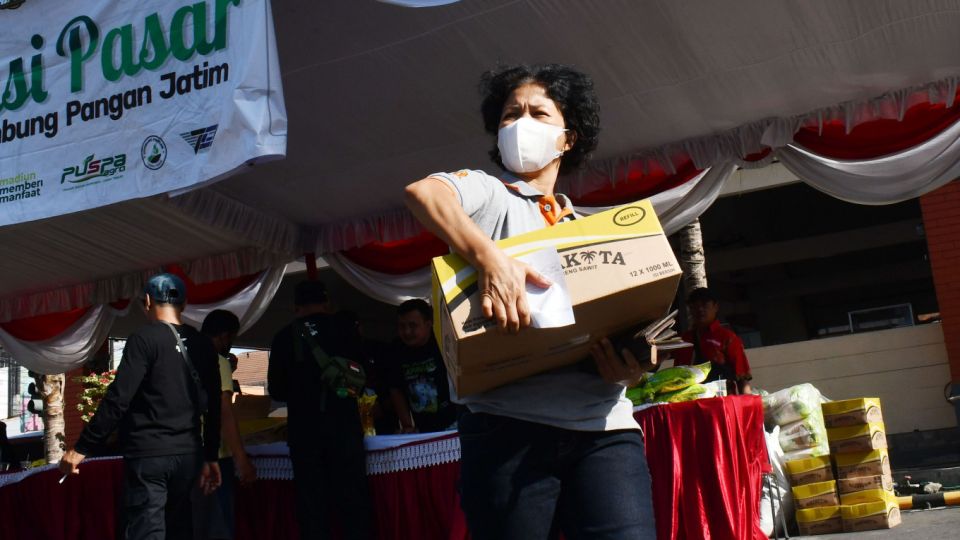November 9, 2022
JAKARTA – The release of the latest Indonesian economic data this week raises hope for continuing recovery and a strong performance in the last quarter of 2022. Despite growing at a slower pace quarterly than Q2 2022, we need to note that growth of 5.72 percent was achieved even after the government increased fuel prices in early September.
This robust performance now faces its final challenges in the last quarter of 2022, which come from raising inflation and interest rates on the domestic side as well as tension from geopolitical pressures that may lead to further global fluctuations.
Overall, we praise the effort of the government and central bank to ensure our economy remains in expansionary territory.
On a sectoral basis, both the trade and manufacturing sector still experience a relatively strong performance. Meanwhile, transportation and warehouse-related services do not seem significantly affected by the fuel price hike in September. On a quarter-to-quarter (qtq) basis, the sector grew slower but again it is still a positive figure.
There could be a silver lining for Indonesia’s economy toward this year’s final quarter as the tourist sector continues to mark robust performance. Foreign tourist arrivals and the hotel occupancy rate kept growing in September, even after the raised fuel prices.
We expect those numbers will continue improving as mobility restrictions ease and because of the Group of 20 Summit later this month.
Although the number of domestic air passengers slightly dropped to 4.1 million passengers in September, railway passengers posted growth of 5.27 percent compared with August.
We believe middle-class consumers have exploited the window of easing mobility restrictions by booking tickets and hotels.
The impact of raised fuel prices and inflation, however, can be seen in the form of quarterly growth in household consumption. Although consumption grew 5.39 percent on a year-by-year (yoy) basis, household consumption contracted by 0.3 percent compared with Q2.
The components that fell into the negative territory are food and beverages at -0.30 percent qtq and clothing and footwear at -1.44 percent qtq. These two components contribute to almost 23 percent of household consumption.
People reducing their consumption of clothing and footwear, or any other durable goods, if a shock strikes the economy is normal behavior. However, it will be interesting to see in greater detail the cause of consumers’ reduced spending on food consumption relative to other types of spending.
Inflation in September was 5.95 percent yoy. However, food and beverages recorded a deflation of 0.30 percent. This unusual behavior could be triggered by changing consumer prioritization because of the COVID-19 pandemic or early anticipation of rising fuel prices.
As we move into the last quarter of 2022, maintaining people’s purchasing power is important.
To achieve GDP growth of 5.3 percent this year, our economy must grow by 5 percent in the last quarter.
Thus, we see taming high inflation in the last quarter as key for the government and central bank in paving our recovery period.
As quoted from Moody, people and households in the United States must spend US$445 more per month to buy the same basket of goods as last year because inflation jumped to 8.2 percent in September.
For households in Indonesia, the additional spending was about Rp 270,000 ($17.26) for people to get the same items as in September 2021.
Looking at the current data, it seems manageable, as the Mandiri Spending Index indicates that people tend to be defensive and maintain their level of spending.
Further, we also see an interesting fact that after fuel prices increased in September, people began spending more frequently, yet with a smaller value. Again, this is an indication that people as customers are now more adaptive to economic changes.
Another area that needs to be anticipated is the rising tensions in trade between China and the US.
As the US starts to control the export of semiconductor chips to China or any supporting services that could help Chinese manufacturers produce chips, we should expect China to retaliate.
In the beginning, the impact would be minimal on our economy. However, it would affect investment in the manufacturing and supply chains of high-tech products if China retaliates with similar export controls of key components in high-tech industries, such as lithium batteries.
*****
The writer is senior research specialist at Mandiri Institute


